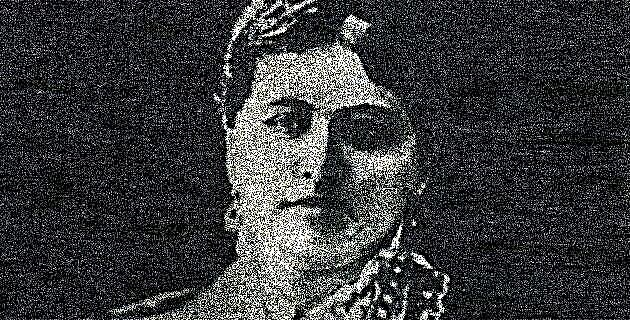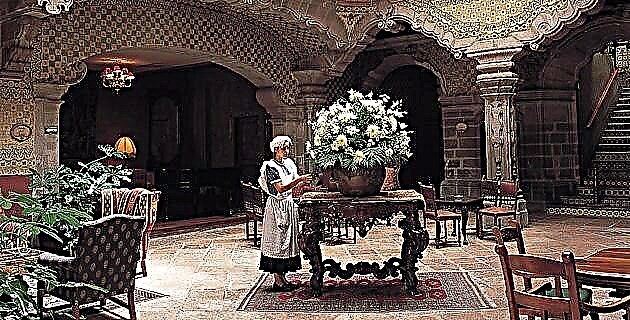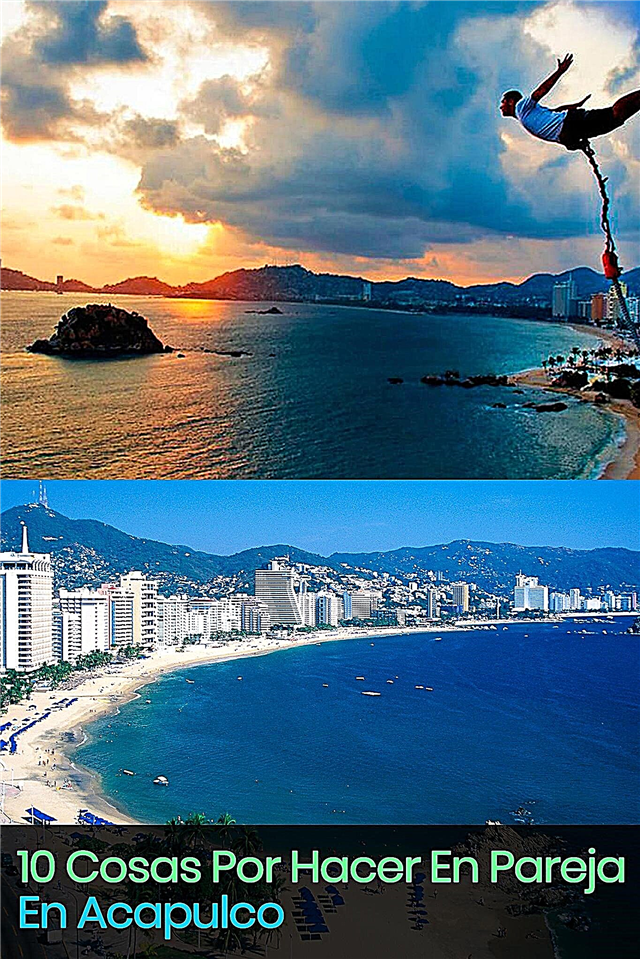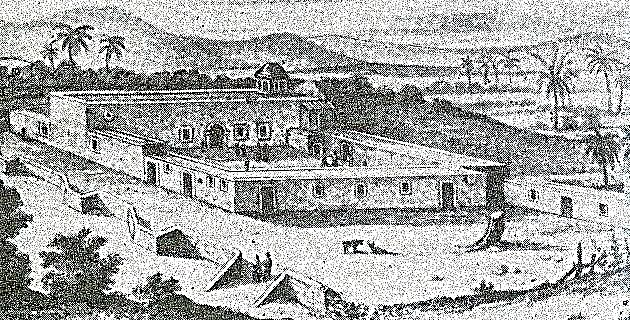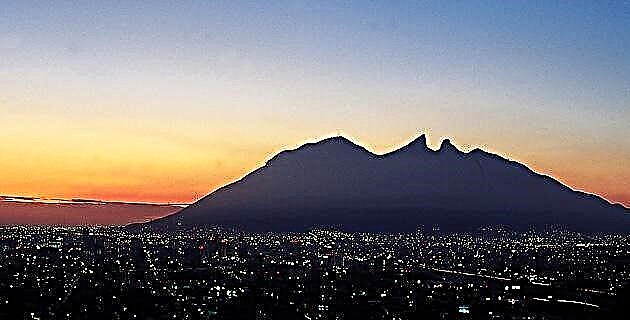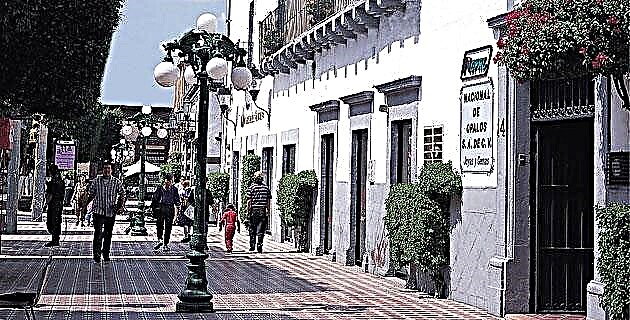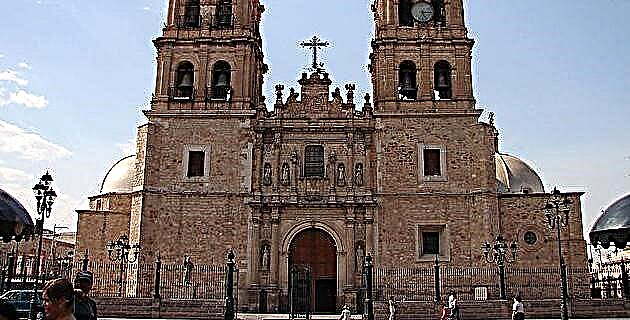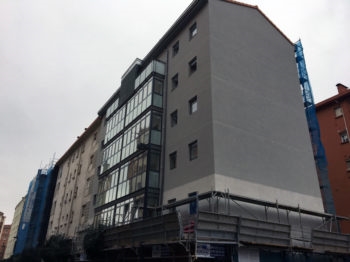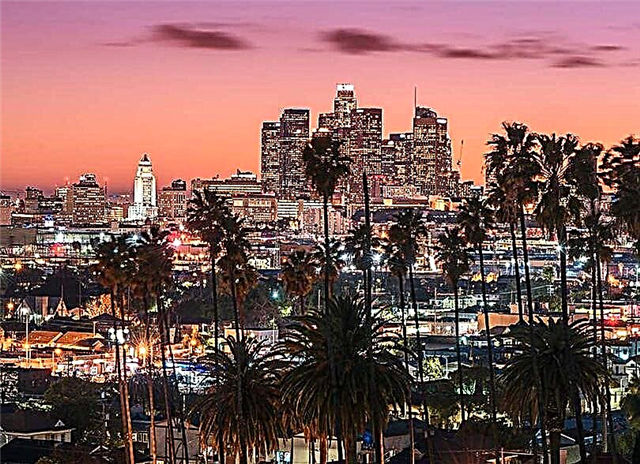
(...) and since we arrived at the great square, which is called Tatelulcu, as we had not seen such a thing, we were amazed by the multitude of people and merchandise that was in it and the great concert and regiment that they had in everything. .. each type of merchant stood by themselves and had their seats located and marked.
Thus begins Bernal Díaz del Castillo, the chronicler soldier, the description of the famous market of Tlatelolco, leaving the only written record of the sixteenth century with which we have on our subject. In his story, he describes trade and merchants of feathers, skins, fabrics , gold, salt and cocoa, as well as live animals and slaughtered for consumption, vegetables, fruit and wood, without missing the apidarians dedicated to removing the very fine obsidian blades, in short, the products and marketing of everything essential for the complex pre-Hispanic society of the great capital of the Mesoamerican world that at that time was living the last, days of its splendor and glory.
Moctezuma II taken prisoner in the company of Itzcuauhtzin -the military governor of Tlatelolco-, the great market was closed to supply the invaders, thus beginning the resistance in a last attempt to save the nation and its culture, already threatened with death. The custom of closing the market in protest or pressure has been repeated with good results throughout our history.
Once the city was annihilated, the traditional trade routes that reached Tenochtitlan from the most remote confines were declining, but that person who had the task of announcing the opening of the market, the famous "In Tianquiz in Tecpoyotl" has continued with his proclamation, which we continue listening, albeit in a different way, up to the present day.
The kingdoms and lordships not submitted by 1521, such as Michoacán, the immense Huasteca region and the Mixtec kingdom, among others, continued to celebrate their traditional markets until gradually all the regions of the then nascent New Spain were incorporated into the Spanish crown; But the essence of those concentrations, which up to now go beyond the simple need to provide themselves with food, continues to represent for indigenous and rural communities a social bond through which kinship ties are reinforced, civil and religious events are arranged, and where important decisions are also made for those communities.
A SOCIAL LINK
The most complete anthropological study on how a market operates socially was carried out between 1938 and 1939 by Dr. Bronislaw Malinowsky, then a researcher at the University of Tulene, and the Mexican Julio de la Fuente. This study only analyzed the way the market of the city of Oaxaca operates and its relationship with the rural communities of the valley that surrounds the capital of that state. In those years, the population of the central Oaxacan valley and its interaction with the great central market were considered the closest in their operation to the pre-Hispanic system. It was demonstrated that although the sale of all kinds of inputs was a necessity, there was an underlying greater communication and social links of all kinds.
It never ceases to surprise us that both researchers underestimated the existence of other markets, although not as large as the Oaxacan one, but which maintained very important characteristics, such as the barter system. Perhaps they were not detected due to the isolation in which they existed, since many years had to pass after the death of both scientists for access gaps to open between other very interesting places due to their market systems, such as the northern highlands of the state of Puebla.
In the main cities of the country, until well into the twentieth century, the "day of the square" -which was usually Sunday- was celebrated in the zócalo or some adjoining square, but the growth of these events and the "modernization" promoted by the Porfirian government from the last third of the XIX century they led to the construction of buildings to give a permanent space to urban markets. Thus, works of great architectural beauty arose, such as the one in the city of Toluca, Puebla, the famous San Juan de Dios market in Guadalajara, and a similar case was the construction of the Oaxacan, enlarged and modified several times in its original space.
IN THE GREAT CAPITAL
The huge markets of the Federal District far exceed the space that we have here for their history and importance, but that of La Merced, that of Sonora, or the no less important of Xochimilco are examples that easily recall what was asserted by Bernal Díaz del Castillo (…) each type of merchandise was by itself and had their seats located and marked. This situation, by the way, spread to modern supermarkets.
In our days, particularly in the province, in small towns, the main square day is still only on Sundays; Eventually a local plaza that works during the week can be made, the examples are many and at random I take the case of Llano en Medio, in the state of Veracruz, approximately two hours away on horseback from the municipal seat that is Ixhuatlán de Madero. Well, Llano en Medio until recently held its weekly market on Thursdays, which was attended by Nahuatl indigenous people carrying textiles made on a backstrap loom, legumes, beans and corn, with which the rural mestizos who arrived every Sunday in Ixhuatlán were supplied. to buy jerky, bread, honey and brandy, as well as clay or pewter household items, which could only be purchased there.
Not all markets that were modern at the time had the community acceptance that local authorities assumed; In memory, I remember a concrete example that must have happened towards the beginning of the 40s, when the city of Xalapa, Veracruz, inaugurated its then brand-new municipal market, with which it was intended to replace the Sunday market in the old Plazuela del Carbón, so called because there The mules arrived loaded with oak wood charcoal, indispensable in the vast majority of kitchens, since domestic gas was a luxury only accessible to a few families. The new building, spacious for the time, was initially a resounding failure; There was no sale of charcoal, or ornamental plants, or goldfinches with beautiful song, or rubber sleeves, or an infinity of other products that used to come from Banderilla, Coatepec, Teocelo and. still from Las Vigas, and that had served for many years as a point of contact between the community and the merchants. It took almost 15 years for the new market to be accepted and the traditional one to disappear forever.
It is true that this example reflects the change of customs and traditions in a city like Xalapa, the capital of the state - which by 1950 was considered the most powerful in the country economically - but, in most of Mexico, in smaller populations or even difficult to access, popular markets continue with their tradition and routine to this day.
AN OLD MARKET SYSTEM
I referred lines back to the northern highlands of the state of Puebla, on whose immense surface are located the same important cities with Teziutlán, as well as countless smaller populations until recently practically isolated. This interesting region, today threatened by systematic and indiscriminate logging, continues to maintain its old market system; However, the most spectacular is undoubtedly the one that takes place in the town of Cuetzalan, where I arrived for the first time during Holy Week in 1955.
The appearance then presented by all the paths that converged on this population looked like gigantic human ant hills, impeccably dressed in white, which attended with an infinite diversity of products from both regions of the coastal plain and the high mountains, to the Sunday and ancient flea market.
That formidable spectacle remained without substantial alterations until 1960, when the Zacapoaxtla-Cuetzalan highway was inaugurated and the gap that communicated the latter with La Rivera, a political border with the state of Veracruz and natural with the Pantepec River, impossible to cross until a few years ago. months to the nearby city of Papantla, Veracruz.
At the Sunday market in Cuetzalan, the barter system was then a common practice, so it was frequent for the pottery artisans of San Miguel Tenextatiloya to exchange their meat, pots and tenamaxtles for tropical fruits, vanilla and chocolate made in metate or cane liquor. The latter products that were also exchanged for avocados, peaches, apples and plums that came from the upper region of Zacapoaxtla.
Little by little, the fame of that market in which beautiful textiles made on a backstrap loom were sold, where indigenous women wore their best clothes and traded with products of the most diverse nature, spread and a number more and more high number of tourists was discovering that hitherto unknown Mexico.
To all those attractions then framed in exuberant vegetation was added the beginning of the archaeological explorations of the Yohualichan ceremonial center, whose resemblance to the pre-Hispanic city of Tajín, was remarkable and consequently attracted more visitors.
OF INDIGENOUS AND MESTIZOS
This increase in tourism contributed to the fact that products not common until that moment in the market made their gradual appearance to be offered for sale, such as the multicolored shawls woven in wool dyed with indigo and embroidered in cross stitch, characteristic of the cold areas of the portion north of the sierra poblana.
Unfortunately, plastic also came to displace both the traditional clay jugs and the gourds that were used as canteens; the huaraches have been replaced by rubber boots and the sandal stalls of industrial production proliferate, the latter with the deplorable consequence of all kinds of mycosis.
The municipal authorities have been acting and released from the Sunday payment "for land use" to indigenous merchants, while they have imposed an additional tax on mestizo vendors.
Today, as was the case in the past, those who sell flowers, legumes, fruits and other foodstuffs continue to occupy their usual place, as do the artisans who produce traditional textiles who in recent times, in some limited cases, display products together with their works. from places as remote as Mitla, Oaxaca and San Cristóbal de las Casas, Chiapas.
Anyone who does not know the place and its regional traditions may believe that everything on display is made locally. The mestizo merchants settle around the zócalo and due to the nature of their products they are easily identifiable.
VARIABLES AND PERSPECTIVES
I have followed for many years the changes and development of this fantastic tianguis; the old custom of bartering is hardly practiced anymore, in part because today the vast majority of the populations of the sierra are communicated, which facilitates the sale of any agricultural product, and also because this old form of trade “is not of people of reason, ”the adjective with which the indigenous refers to the mestizo. Women have always played a decisive role in commercial transactions; They keep the last word to close any negotiation and although they almost always physically stand a little behind their husbands, they invariably consult them before concluding any commercial deal. For their part, the embroiderer artisans from the town of Nauzontla, a traditional producer of the blouse worn by all the indigenous women of the region, attend the market alone or accompanied by a relative: mother-in-law, mother, sister, etc., and operate commercially on the sidelines. of their male relatives.
It is impossible here to describe in detail all the socio-anthropological aspects that distinguish this famous market, which to a large extent has remained with many of its ancestral peculiarities thanks to the tourism that visits it.
The market town crier of the pre-Hispanic markets no longer sings to announce the start of the important event; today, he rings church bells, wakes up to the hubbub of the crowd, and at worst overwhelms with the deafening scandal of the sound amplifiers.
Source: Unknown Mexico No. 323 / January 2004

